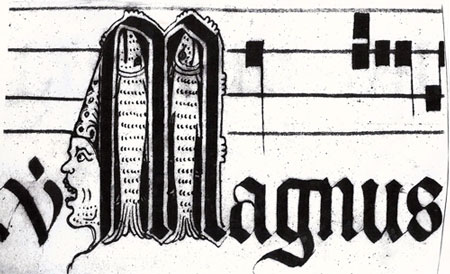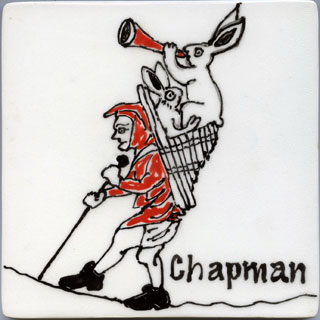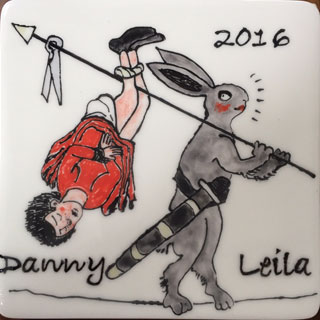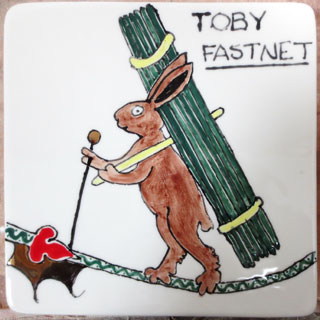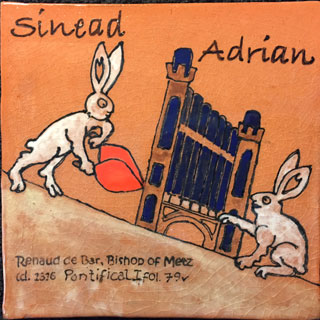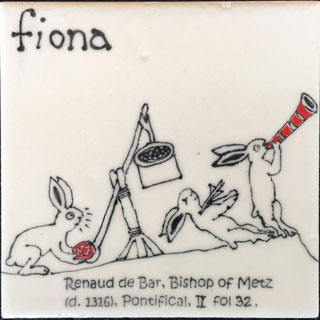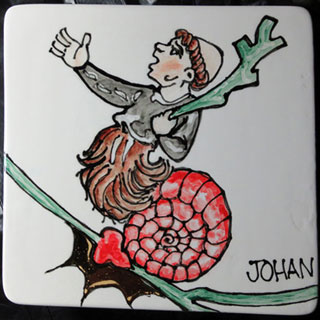
Hand-Painted Ceramics For Sale The images are taken from books made seven centuries ago for the 69th Bishop of Metz, Renaud de Bar (1303 d. 1316, reputedly poisoned) for his use in the Church. They are lavishly illuminated and in addition to the major decoration contain more than a thousand small figures in the margins whose only apparent purpose is to amuse and delight. Hare Pottery of Ballydehob has been set up to publish some of these images, chiefly those showing the hare. RENAUD DE BARRenaud de Bar was the fourth son of Thibaut Count of Bar and Jeanne de Toucy. The chief residence of the counts was at Bar-le-Duc, although there was a house in Paris and in Metz. Renaud’s eldest brother, Henri married Eleanor, daughter of Edward I of England in Bristol in 1293 (and as dowry she received all the chattels and property of the jews of Bristol, expelled by general edict of 1291). Another elder brother, Thièbaut, became Bishop of Liège.
THE BOOKSRenaud commissioned six manuscripts for his use in the Church, magnificent productions using the best materials and the best craftsman, and profusely illuminated with copious gold leaf burnished to brilliance. Apart from the major illumination, the books are exceptional for their marginal scenes, some of which are of sacred scenes but the majority of which are profane. In the latter, the hare is a principal actor and unique in these books in her animosity towards the hunter/tailor who would kill her for her pelt to line hoods and cloaks. A number of marginal scenes revolves around the subject of the hare exacting revenge on the hunter and these could be described as the hunter hunted or the world upside down. The hare is also shown fighting with her old adversary, the hound, using shield and sword, or defending a castle against him and his troops. In one instance, the hare triumphs and bears him home, presumably to eat. Another scene depicts the hare making use of a temporary bath shelter put up in the fields for the king on his travels. The hare seizes the opportunity to give baby a bath, swaddled like a royal baby. TECHNIQUEEach individually painted piece takes a number of steps in the making: 1)the design is put on the piece; 2) one, two or three coats of underglaze applied; 3) a transparent glossy glaze finishes this stage. If the piece contains gilding, it is painted on and fired at a lower temperature next. Adding text requires a further stage (see no. 11). TYPES of ceramic piece available. At the moment, there are four choices of piece: BESPOKEAny of these images can be made specially to bear a personal name. This involves making the piece from the beginning of the design stage with a particular name. Examples of bespoke ceramics:
Price on application. Allow three weeks for delivery. For further images available as Bespoke, see the video:
|
||||||||||
